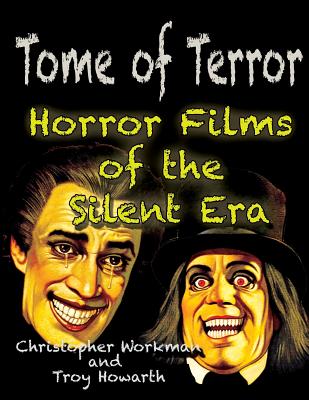Tome of Terror: Horror Films of the Silent Era

Tome of Terror: Horror Films of the Silent Era
In the late 1800s, a scientist working for Thomas Alva Edison invented an easy-to-use motion picture camera. Soon, people all over the world were using similar cameras to shoot "actuality" films, or films of people engaged in everyday activities, as well as excerpts from live plays. Things changed in 1896, however, when a French stage magician named Georges Méliès struck upon the idea of using motion picture cameras to create fantastic and unbelievable images. A series of short films featuring a bevy of incredible monsters followed. Before long, filmmakers all over the world were doing much the same, but it wasn't until the real-life horrors of World War I that movie producers saw the potential of cinema to truly provide escapist entertainment. D.W. Griffith in the United States made the first feature-length dramas, while Paul Wegener and Robert Weine in war-torn Germany applied the artistic movement known as Expressionism to film. Together, these and other filmmakers established the horror genre as we know it, influencing it for decades to come. TOME OF TERROR is a series of books detailing the history of the horror genre, from the mid-1890s to the present day. Never before has such a series been attempted ... or been so comprehensive. This entry, HORROR FILMS OF THE SILENT ERA, covers more than 1,000 films, beginning with the earliest known horror film, Trilby Hypnotic Scene from 1895, and concluding with The Woman in White from 1929. In addition to well-known horror classics from the United States and Great Britain, authors Christopher Workman and Troy Howarth also analyze films from Germany, France, Japan and Mexico, among other nations. The series is lavishly illustrated with original stills, lobby cards, newspaper articles, and poster art.
204.60Lei
204.60Lei
Livrare in 2-4 saptamani
Descrierea produsului
In the late 1800s, a scientist working for Thomas Alva Edison invented an easy-to-use motion picture camera. Soon, people all over the world were using similar cameras to shoot "actuality" films, or films of people engaged in everyday activities, as well as excerpts from live plays. Things changed in 1896, however, when a French stage magician named Georges Méliès struck upon the idea of using motion picture cameras to create fantastic and unbelievable images. A series of short films featuring a bevy of incredible monsters followed. Before long, filmmakers all over the world were doing much the same, but it wasn't until the real-life horrors of World War I that movie producers saw the potential of cinema to truly provide escapist entertainment. D.W. Griffith in the United States made the first feature-length dramas, while Paul Wegener and Robert Weine in war-torn Germany applied the artistic movement known as Expressionism to film. Together, these and other filmmakers established the horror genre as we know it, influencing it for decades to come. TOME OF TERROR is a series of books detailing the history of the horror genre, from the mid-1890s to the present day. Never before has such a series been attempted ... or been so comprehensive. This entry, HORROR FILMS OF THE SILENT ERA, covers more than 1,000 films, beginning with the earliest known horror film, Trilby Hypnotic Scene from 1895, and concluding with The Woman in White from 1929. In addition to well-known horror classics from the United States and Great Britain, authors Christopher Workman and Troy Howarth also analyze films from Germany, France, Japan and Mexico, among other nations. The series is lavishly illustrated with original stills, lobby cards, newspaper articles, and poster art.
Detaliile produsului










